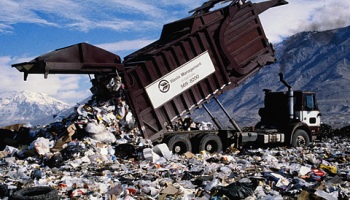The European Parliament has voted for tougher regulations on the disposal of electronic trash, requiring each country to collect 4kg of e-waste per citizen by 2012, and to process 85 percent of all it’s electronic waste by 2016.
The tougher Waste Electrical and Electronic Equipment (WEEE) directive is intended to tackle the issue of toxic waste from electronic products, which is often exported illegally to the third world where it is processed in lethally unsafe ways. The new tighter version of the WEEE directive has been delayed; it was welcomed by charity Computer Aid International, which called for still tougher measures in future.
Long Time Coming
 Changes to the Directive, including a higher collection target and a separate reuse target have emerged from a review which started in 2008, and has been repeatedly delayed, most recently last October. On Thursday 3 February, the European Parliament finally had a full plenary vote, passing the update by 580 votes to 37. on the changes, and according to Computer Aid the proposals are a positive step, although there should be more ambitious targets in the future.
Changes to the Directive, including a higher collection target and a separate reuse target have emerged from a review which started in 2008, and has been repeatedly delayed, most recently last October. On Thursday 3 February, the European Parliament finally had a full plenary vote, passing the update by 580 votes to 37. on the changes, and according to Computer Aid the proposals are a positive step, although there should be more ambitious targets in the future.
So what did the MEPs vote for?
Member states should collect 85 percent of the e-waste they produce from 2016, acording to the proposals. Member states should collect 4 kg of e-waste per inhabitant by 2012. In addition MEPs recommend a 50-75 percent recycling target, and suggested a separate re-use target, initially set at 5 percent.
This proposals will now go before the European Council for possible approval on 14 March 2011.
“Computer Aid International is pleased to see MEPs approve a higher and more ambitious collection target of 85 percent of e-waste arising,” said Haley Bowcock, environmental advocacy officer at Computer Aid. “With e-waste generation in the EU predicted to grow to 12 million tonnes per year by 2020 and 67 percent of this amount still completely unaccounted for – either landfilled, sent to sub standard treatment facilities or illegally exported – it is clear that much more must be done to address this problem.”
“We are happy to see that a separate reuse target is finally going to be included although, at 5 percent, we believe that this target is far too low,” said Bowcock.
Despite supporting greater recycling, the UJ government has in fact scrapped the WEEE Advisory Body which oversaw the introduction of the WEEE directive in the UK, and reports have found that the UK is failing to stem the toxic tide of e-waste flowing to the developing world
Environmental Harm
“Reuse is the most environmentally friendly option for much electronic equipment,” she added. “For example, it takes 240kg of fossil fuels, 22kg chemicals and 1,500 litres of water to produce one PC. Furthermore, each computer has a potential lifespan of ten years but UK consumers usually replace equipment after only 3-4 years. Consequently the lifespan of most unwanted IT could be doubled instead of being discarded.”
“In order to better manage the rising volumes of e-waste, targets for re-use and the mechanisms to support these targets should be much more ambitious,” said Bowcock. “For instance, in our experience, there is potential for Europe to reuse 75 percent of ICT equipment and we hope that this tentative step in the right direction paves the way for more ambitious proposals and actual reuse in the near future.”
Computer Aid has long championed the revisions to the WEEE Directives and has published its own set of recommendation. The charity actively recycles old computer equipment, and last year launched a solar powered Internet café in Kenya to enable rural communities with no electricity to get online.




